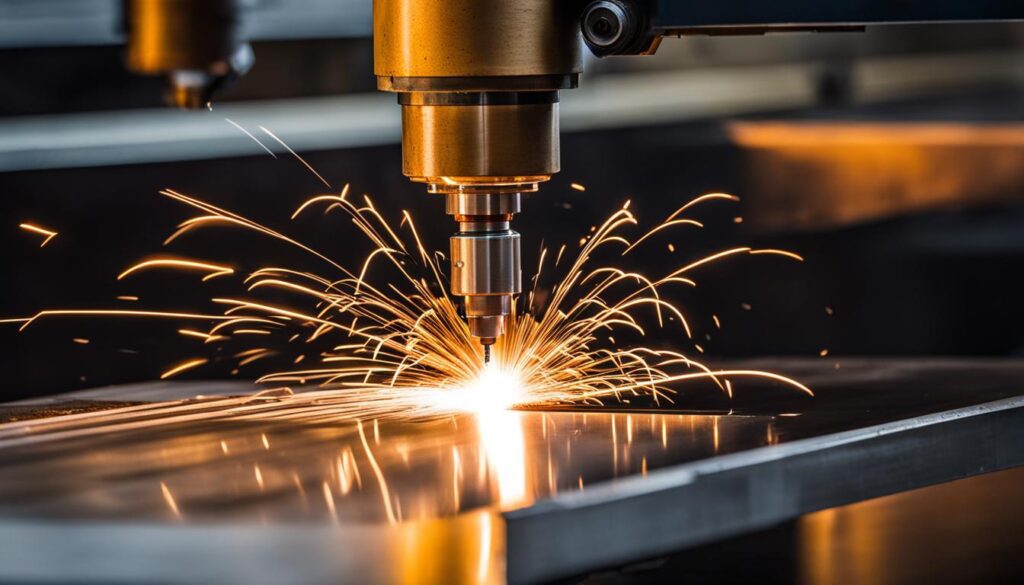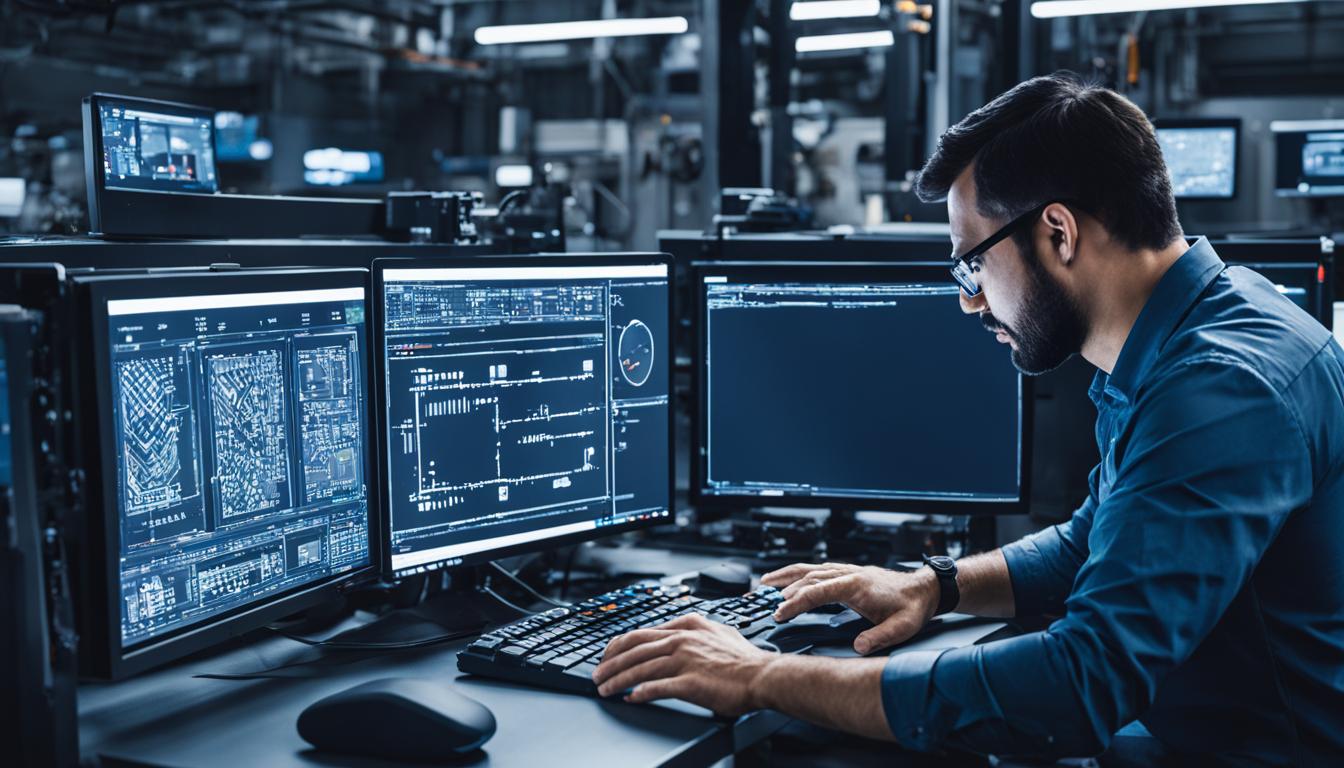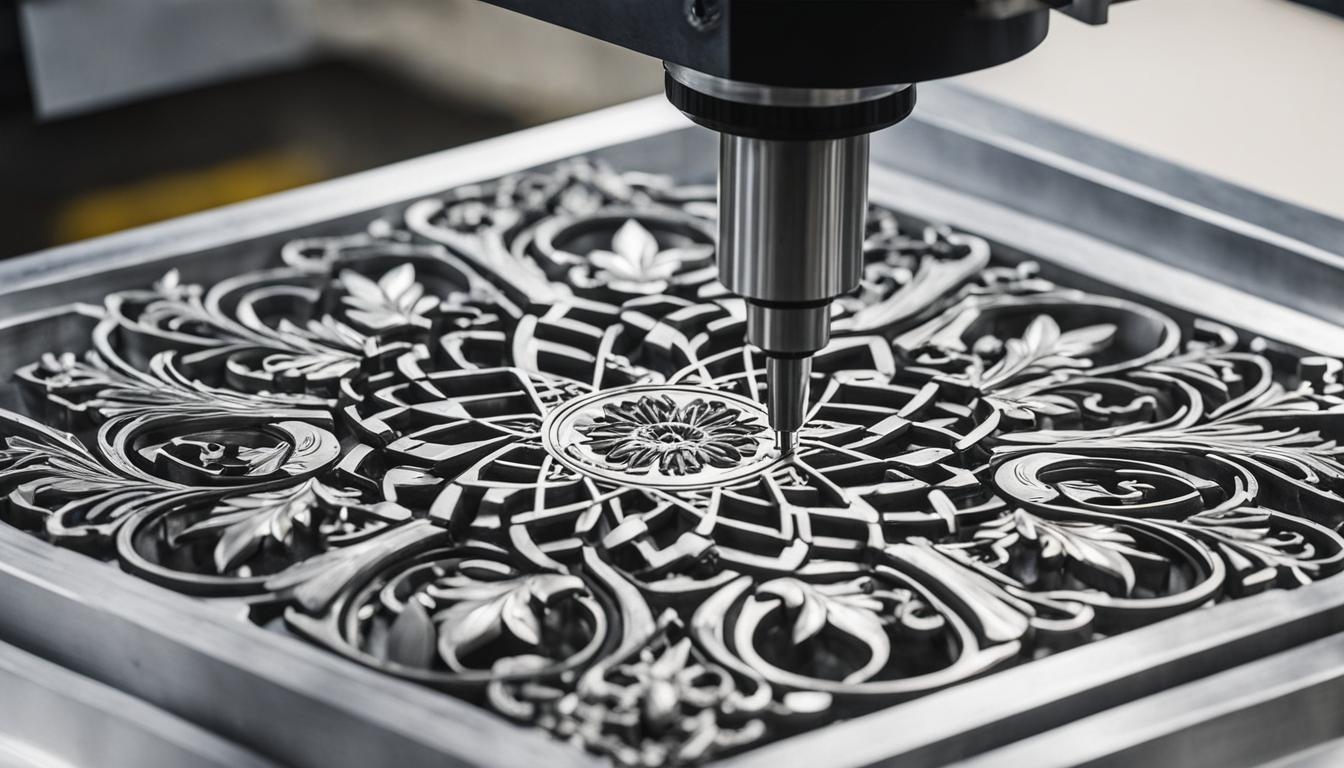CNC machines offer a wide range of capabilities that revolutionize manufacturing processes. These machines excel in precision and accuracy, producing parts with extremely tight tolerances down to fractions of a millimeter. They can create complex geometries and intricate shapes through multi-axis movements, enabling the production of components that would be challenging or impossible to manufacture manually. CNC machines are versatile in terms of material compatibility, capable of working with metals, plastics, wood, and composites.
They significantly enhance efficiency and speed in production, especially for large runs or complex designs. Common types of CNC machines include lathes for cylindrical parts, milling machines for complex 3D shapes, routers for softer materials, plasma cutters for metal sheets, and electrical discharge machines (EDM) for hard materials. Advanced CNC systems can integrate with CAD/CAM software, allowing for seamless design-to-production workflows. Some modern CNC machines also incorporate features like automatic tool changing, real-time monitoring, and adaptive control systems to optimize performance and reduce downtime.
- CNC machines are versatile tools used in manufacturing processes.
- They can control a range of complex machinery, including grinders, lathes, mills, and CNC routers.
- CNC machines perform three-dimensional cutting tasks with precision and efficiency.
- They are extensively used in industries like metal and plastic production.
- CNC machines offer increased accuracy, speed, and automation compared to manual control methods.
How Does CNC Machining Work?
In the world of manufacturing, CNC machining is a highly efficient and precise process that relies on computer software to control the movement of tools and machinery. This enables the creation of complex and intricate parts with minimal human intervention. So, how exactly does CNC machining work?
Understanding the CNC Machining Process
The CNC machining process starts with the creation of a digital model or design using computer-aided design (CAD) software. This design is then converted into a set of instructions known as G-code, which contains specific commands to guide the CNC machine’s operations.
Once the G-code is generated, it is transferred to the CNC system, which consists of a computer and the machine itself. The CNC system interprets the G-code and instructs the machine on how to move the cutting tools to shape the raw material, such as metal or plastic, into the desired form.
The CNC system contains a code generator that determines the position and movement of the tools. It calculates the precise coordinates and feeds these instructions to the machine’s motors. These motors control the linear and rotational movements of the cutting tools along different axes.
The Role of CNC Programming
Central to the CNC machining process is CNC programming. CNC programmers, often skilled engineers, write the instructions in G-code, ensuring that each movement and operation is accurately defined. They optimize the toolpaths to minimize production time and maximize efficiency.
CNC programming involves a deep understanding of mathematics, engineering principles, and the specific capabilities of the CNC machine being used. It requires knowledge of various programming languages, such as G-code and M-code, to control different aspects of the machining process.
Advantages of CNC Machining
CNC machining offers numerous advantages over traditional manual machining methods. One of the key benefits is the high level of precision and accuracy that can be achieved. CNC machines can repeatedly produce parts with tight tolerances, resulting in consistent quality and reducing waste.
Another advantage is the automation of the process. Once programmed, CNC machines can operate continuously, 24/7, with minimal supervision. This significantly increases productivity and reduces labor costs. Additionally, CNC machines can be easily reprogrammed or modified to accommodate design changes or new product iterations.
The CNC machining process also improves worker safety by minimizing direct interaction with cutting tools and reducing the risk of operator errors. This makes it a safer alternative to manual machining, especially for complex and intricate tasks.
Furthermore, CNC machines offer versatility, enabling the manufacturing of a wide range of products across different industries, from aerospace to automotive, electronics to medical devices. This adaptability makes CNC machining a valuable tool in modern manufacturing processes.
The CNC Machining System
| CNC Components | Description |
|---|---|
| CNC Machine | The physical equipment that performs the machining operations based on the instructions provided by the CNC system. |
| CNC Software | The computer software that generates the G-code instructions, controls the machine’s movements, and manages overall operations. |
| Cutting Tools | The tools, such as drills, mills, or lathes, that are mounted on the CNC machine to shape the raw material. |
| Materials | The raw materials, such as metals, plastics, or composites, that are shaped and transformed into finished products. |
| Workpiece | The object or component being machined, which undergoes various operations to achieve the desired shape and dimensions. |
Through the combined power of computer programming, precise tool movements, and automation, CNC machining revolutionizes the manufacturing industry. It enables the production of complex and high-quality parts with efficiency and consistency.
In the next section, we will explore the different types of CNC machines and their specific applications in various industries.
The Different Types of CNC Machines
When it comes to CNC (Computer Numerical Control) machines, there are several types available, each designed to meet specific manufacturing requirements. Here, we will explore some of the most common CNC machine types:
CNC Mills
CNC mills are widely used in the manufacturing industry. They can run on programs based on G-code or proprietary languages. CNC mills are capable of performing a range of machining operations, including drilling, cutting, and shaping various materials with precision.
CNC Lathes
CNC lathes are specifically designed for cutting workpieces in a circular direction. They can produce complex designs and shapes by rotating the workpiece while a cutting tool removes material. CNC lathes are commonly used in industries such as automotive, aerospace, and jewelry making.
CNC Plasma Cutters
CNC plasma cutters use plasma torches to cut through metal materials. The intense heat generated by the plasma torch melts the metal, and a stream of high-pressure gas blows away the molten material. CNC plasma cutters are often used in metal fabrication, construction, and automotive industries.
Electric Discharge Machines (EDM)
Electric discharge machines, also known as EDM, use electrical sparks to remove material from the workpiece. This process is particularly useful for creating intricate shapes and fine details. EDM machines are commonly used in the production of molds, dies, and tooling.
Water Jet Cutters
Water jet cutters utilize a high-pressure stream of water or a mixture of water and abrasive substances to cut through hard materials, including metal, stone, and composites. CNC-controlled water jet cutters are known for their versatility and ability to create precise cuts without heat-affected zones.
Each type of CNC machine offers unique features and advantages, allowing manufacturers to cater to specific production needs. By utilizing these advanced machines, industries can achieve greater efficiency, accuracy, and productivity in their manufacturing processes.

What Else Can a CNC Machine Do?
In addition to the main types of CNC machines, there are numerous applications and capabilities of CNC machining that make it an essential tool in various industries. CNC machines offer a wide range of functionalities and can be used to perform highly detailed cuts in different materials like metal, plastic, wood, and more. Their precision, complexity, speed, flexibility, and repeatability make them invaluable in modern manufacturing processes.
CNC machines find applications in a diverse range of industries, including:
- Aerospace: CNC machines are used to produce steel aerospace parts with strict tolerances and intricate designs.
- Automotive: CNC machining plays a vital role in manufacturing metal automotive components, engine parts, and gearboxes.
- Electronics: Precision is crucial in the electronics industry, and CNC machines enable the production of precise circuit boards, connectors, and other electronic components.
- Medical: In the medical industry, CNC machines are used to create specialized products such as implants and medical equipment with high accuracy and quality.
Besides these industries, CNC machines are also utilized in the production of various consumer goods. The capabilities of CNC machines enable the creation of customized products tailored to specific customer requirements. For example, CNC machines can be used to manufacture wooden decorations, plastic consumer goods, and many other customized items.
Here are some common products produced by CNC machines:
- Steel aerospace parts
- Metal automotive components
- Wooden decorations
- Plastic consumer goods
The versatility of CNC machines allows manufacturers to achieve intricate designs, tight tolerances, and high-quality finishes. These machines can efficiently handle both small-scale production and large-scale manufacturing processes. With CNC machines, businesses can streamline their production, reduce waste, and increase productivity, ultimately leading to cost savings and improved competitiveness in the market.
Examples of CNC Machine Applications
| Industry | Application |
|---|---|
| Aerospace | Production of steel aerospace parts with intricate designs and strict tolerances |
| Automotive | Manufacturing of metal automotive components, engine parts, and gearboxes |
| Electronics | Creation of precise circuit boards, connectors, and electronic components |
| Medical | Production of specialized medical products such as implants and equipment |
| Consumer Goods | Manufacturing of customized wooden decorations and plastic consumer goods |
The versatility, precision, and efficiency of CNC machines make them a cornerstone of modern manufacturing processes. As technology continues to advance, CNC machining capabilities will continue to evolve, enabling even greater possibilities in various industries.
CNC Machine Programming
In order to operate CNC machines, numerical control programming is used. The programming language that controls the movement and functioning of the machine is called G-code. This specialized language allows for precise control over various aspects of the manufacturing process, such as tool speed, position, and other parameters.
M-code is another type of code used in CNC operations. While G-code focuses on controlling the internal movements of the machine, M-code controls external actions, such as turning on or off auxiliary devices or stopping the spindle.
To execute the desired manufacturing process, a CAD (Computer-Aided Design) software is utilized to create a 2D or 3D model of the part. This model is then translated into G-code, which provides the instructions necessary for the CNC machine to produce the desired outcome.
CNC programming offers manufacturers the ability to create intricate and complex designs with utmost precision. By using this programming method, they can implement specific cutting patterns, tool paths, and other commands tailored to their unique manufacturing needs.
Throughout the programming process, operators can make modifications and adjustments as necessary, ensuring that the CNC machine is programmed to produce the desired results.
Benefits of CNC Machine Programming
The utilization of CNC machine programming provides several advantages, including:
- Enhanced Precision: CNC programming allows for precise control over tool movements, resulting in highly accurate and repeatable machining processes.
- Increased Efficiency: By automating the manufacturing process, CNC programming reduces the time and effort required for manual operations, leading to improved productivity.
- Flexibility: CNC machines can be easily reprogrammed to accommodate design changes or produce different parts, offering versatility in manufacturing processes.
- Reduced Waste: CNC programming enables optimal material usage, minimizing waste and reducing production costs.

The image above showcases the process of CNC machine programming, which involves translating a CAD model into CNC instructions.
Benefits of CNC Machines
CNC machines offer numerous advantages over manual machining methods. They revolutionize the manufacturing process by leveraging computer control to enhance efficiency, accuracy, and productivity. Let’s explore the key benefits of employing CNC machines:
1. Reduced Production Costs
CNC machines play a crucial role in reducing production costs by automating tasks, maximizing material utilization, and minimizing human errors. The precise control provided by CNC machines ensures optimal use of resources, resulting in fewer material wastages and lower operational expenses.
2. Enhanced Precision and Accuracy
One of the primary advantages of CNC machines is their ability to consistently achieve high precision and accuracy in manufacturing processes. These machines can execute intricate cutting, carving, and drilling operations with incredible precision, leading to superior quality products and minimized defects.
3. Full Automation and Consistency
CNC machines excel in offering complete automation, reducing the reliance on manual labor. They can be programmed to execute complex tasks with great consistency, ensuring that every part produced adheres to the desired specifications. This eliminates variations caused by human factors, saving time and reducing errors.
4. Operational Intelligence and Integration
CNC machines go beyond basic manufacturing tasks and provide operational intelligence. They can be integrated with other software systems, such as ERP (Enterprise Resource Planning) or MES (Manufacturing Execution System), to optimize plant performance, monitor machine health, and facilitate proactive maintenance. This integration enables real-time data analysis, process monitoring, and optimization for improved efficiency and productivity.
5. Increased Safety
CNC machines enhance workplace safety by minimizing direct human involvement in hazardous processes. With operators overseeing the operation from a safe distance, the risk of accidents, injuries, and exposure to harmful materials is significantly reduced.
| Benefits of CNC Machines | Description |
|---|---|
| Reduced Production Costs | Increased efficiency, reduced waste, and minimized human error lead to cost savings. |
| Enhanced Precision and Accuracy | Consistently produces high-quality products with minimal defects. |
| Full Automation and Consistency | Automated processes ensure consistent and high-quality output. |
| Operational Intelligence and Integration | Integrates with other software systems to optimize plant performance and maintenance. |
| Increased Safety | Minimizes direct human involvement in hazardous manufacturing processes. |
Overall, CNC machines provide significant advantages in terms of cost reduction, improved accuracy, automation, and operational intelligence. These benefits make CNC machining a preferred choice for various industries, including aerospace, automotive, electronics, and more.
Industries that Utilize CNC Machining
CNC machining is a crucial process used in a wide range of industries that demand precision and high-quality parts. Let’s explore some of the key industries that heavily rely on CNC machining:
Aerospace Industry
The aerospace industry heavily relies on CNC machining to manufacture critical components that require strict adherence to specifications such as flatness, roundness, and cylindricity. CNC machines enable the production of intricate parts used in aircraft engines, airframes, landing gear systems, and more. With CNC machining, aerospace manufacturers can ensure the highest levels of accuracy and performance.
Medical Industry
CNC machining plays a vital role in the medical industry, where precision and accuracy are of paramount importance. Medical device manufacturers utilize CNC machines to produce specialized products such as implants, surgical instruments, and medical equipment. CNC machining enables the creation of intricate and complex designs that conform to stringent medical standards and enhance patient outcomes.
Automotive Industry
In the automotive industry, CNC machining is widely utilized for the production of engine parts, gearboxes, chassis components, and other critical automotive components. CNC machines enable automotive manufacturers to achieve the required precision, reliability, and repeatability in the manufacturing process. The automotive industry relies on CNC machining to meet the stringent quality standards and performance requirements of modern vehicles.
Other Industries
In addition to aerospace, medical, and automotive sectors, CNC machining finds applications in various other industries. The electronics industry relies on CNC machining for the production of intricate circuit boards, connectors, and electronic components. The oil and gas industry utilizes CNC machining to manufacture components for drilling equipment, valves, and pipelines. The marine industry benefits from CNC machining for precision manufacturing of boat parts and ship components.
| Industry | Applications |
|---|---|
| Aerospace | Engine parts, airframes, landing gear systems |
| Medical | Implants, surgical instruments, medical equipment |
| Automotive | Engine parts, gearboxes, chassis components |
| Electronics | Circuit boards, connectors, electronic components |
| Oil and Gas | Drilling equipment, valves, pipelines |
| Marine | Boat parts, ship components |
These industries, among others, leverage CNC machining to meet their precise manufacturing requirements. The versatility and reliability of CNC machines make them indispensable tools for achieving high-quality and complex parts across diverse sectors.
Conclusion
In conclusion, CNC machines have revolutionized the manufacturing industry with their exceptional capabilities. These machines offer unmatched versatility, precision, and automation, making them vital in various sectors. Whether it’s intricate cutting, shaping, or complex machining operations, CNC machines excel in delivering high-quality results.
One of the key advantages of CNC machines is their ability to reduce costs and minimize waste. Through efficient programming and meticulous control, these machines optimize production processes and minimize the risk of human error. Additionally, CNC machines ensure worker safety by automating tasks that were previously done manually, reducing the chances of accidents and injuries.
The benefits of CNC machines extend beyond cost-efficiency and safety. Their ability to produce highly detailed and accurate parts has a profound impact on the quality of manufactured products. With CNC machines, manufacturers can achieve consistency, speed, and repeatability in their production processes, resulting in superior products and customer satisfaction.
As we move forward, CNC machines will continue to shape the future of manufacturing, with their advanced capabilities and technological advancements. From aerospace and automotive industries to medical and electronics, CNC machining plays a significant role in delivering precision-engineered components and products. With the ongoing innovation in CNC technology, we can expect further improvements in productivity, efficiency, and overall manufacturing excellence.
